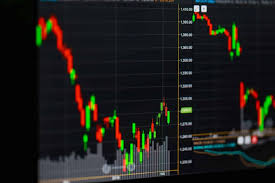Mastering Forex Currency Trading A Comprehensive Guide

Mastering Forex Currency Trading: A Comprehensive Guide
Forex currency trading, or Foreign Exchange trading, is a dynamic and potentially lucrative field that has attracted millions of traders worldwide. As the largest financial market in the world, it presents numerous opportunities for traders to profit from currency fluctuations. In this guide, we will explore the fundamentals of forex trading, essential strategies, risk management techniques, and the importance of using reputable forex currency trading Forex Brokers in South Africa to ensure a smoother trading experience.
Understanding Forex Trading
Forex trading involves buying and selling currency pairs in order to profit from changes in exchange rates. The market operates 24 hours a day, five days a week, allowing traders to engage in trading whenever they want. Unlike stock markets that operate within set hours, the Forex market is decentralized and global, making it accessible to anyone with an internet connection.
Currency Pairs
In Forex, currencies are traded in pairs, such as EUR/USD or GBP/JPY. The first currency listed is the base currency, while the second is the quote currency. The exchange rate indicates how much of the quote currency is needed to purchase one unit of the base currency. Understanding how these pairs work is fundamental to your success in forex trading.
Types of Forex Orders
Traders utilize various types of orders to execute trades. The most common are:
- Market Orders: Execute immediately at the current market price.
- Limit Orders: Set a target price for buying or selling.
- Stop Orders: Trigger a market order once a certain price level is reached.
Key Strategies for Forex Trading
Successful forex traders often employ a combination of different trading strategies. Here are a few popular ones:
1. Trend Following
Trend following involves analyzing market trends and making trades in the direction of the trend. This can be done with technical indicators such as moving averages, RSI, or MACD.
2. Range Trading
Range traders identify significant levels of support and resistance in a currency pair and make trades based on price bouncing between these levels. This strategy is effective in markets that are not trending.
3. Breakout Trading
This strategy involves entering a trade when the price breaks through a support or resistance level, indicating that the price may continue in that direction for a while.
Risk Management in Forex Trading
Risk management is crucial in forex trading. Here are several key components:

1. Position Sizing
Determining how much of your capital to risk on a single trade is essential. Many traders recommend risking no more than 1-2% of your total account balance on one trade.
2. Stop-Loss Orders
Implementing stop-loss orders is vital to protect your capital. These orders automatically close your position when the market reaches a certain price, limiting potential losses.
3. Diversification
Just like in investing, diversification in forex trading can help reduce risk. Trade various currency pairs instead of putting all your capital into one pair.
Choosing a Forex Broker
Selecting the right forex broker is instrumental in your trading success. Consider the following criteria:
1. Regulation
Ensure that your broker is regulated by a reputable authority. This adds a layer of security to your funds and trades.
2. Trading Platform
The trading platform should be user-friendly and equipped with the necessary tools for technical analysis, order types, and charting capabilities.
3. Spreads and Fees
Pay attention to the spreads and commission fees associated with trading. Lower fees can significantly impact overall profitability.
The Psychological Aspect of Trading
Trading psychology plays a significant role in a trader’s success. Emotions such as fear and greed can lead to impulsive decisions that may not align with a trader’s strategy. Developing a disciplined mindset and sticking to your trading plan is vital, even during times of market volatility.
Developing a Trading Plan
A solid trading plan outlines your strategies, risk tolerance, and goals. It serves as a blueprint for your trading activities, helping you stay focused and structured in decision-making.
Conclusion
Forex currency trading offers vast opportunities for those willing to invest the time and effort to learn and practice. By understanding the fundamentals, employing effective strategies, managing risks, and maintaining a disciplined approach, you can increase your chances of success in this exciting and fast-paced market. Remember the importance of choosing the right broker and continuously educating yourself to adapt to the ever-changing market conditions.
